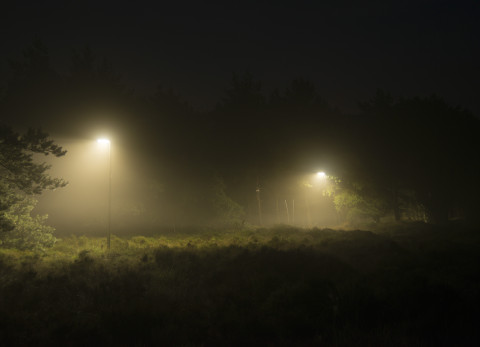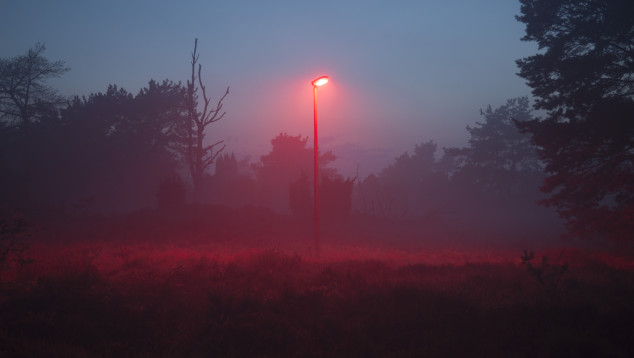National Science Agenda: how do we keep our biological clocks healthy?

National Science Agenda: how do we keep our biological clocks healthy?
The 24-hour society in which we now live has a disruptive effect on biological clocks. Consequences include an increased risk of health problems - both mental and physical - and a worldwide threat to biodiversity. Dutch researchers joining forces in the BioClock consortium, together with a wide range of societal partners, have just won 9.7 million euros in funding under the Dutch Research Council's National Research Agenda. The consortium's aim is to keep our biological clocks healthy. NIOO-researcher Kamiel Spoelstra is one of its core members.
How important are biological clocks, and the state of our knowledge about them, for society and for nature? "They're of tremendous importance", stresses light researcher Kamiel Spoelstra. "Society benefits greatly from a population with a healthy biological clock, in a healthy natural environment."
And how unusual is the BioClock consortium? "It's without precedent", says Spoelstra. Both in terms of the sheer range of the research and its practical application, there is nothing like it internationally.
Many of the consortium's members have contributed to ongoing fundamental reseach on the issue for years and years. The grant under the National Science Agenda - which is based on questions submitted by members of the public - will allow them to put the knowledge they've accrued to concrete use in the interest of society.
(Text continues below)
From shift work to vaccination timetables
The researchers want to make our biological clocks healthy again, and to make sure they will stay that way. Their plans cover all of society at large: from human health to living nature and preserving biodiversity.
The six-year research programme runs the gamut from the health impact of shift work and the optimal timetable for flue vaccination and immunotherapy against cancer, to chronotherapy as a treatment for depression and the impact of light pollution on insects and other light-sensitive animals. In these light pollution studies, NIOO has a leading role.
"We see that species in a food web are changing their daily rhythms under pressure from that greatest excess of our 24-hour economy: artificial light at night. The seasonal rhythms of animals and plants are also being disrupted." Spoelstra has studied the effects of different light colours as part of the Light on Landscape (formerly Light on Nature) project over a number of years, using a one-of-a-kind experimental setup comprised of coloured street lights.
Clocks in nature
Spoelstra is one of only a handful of researchers with extensive experience studying the effects of light on ecosystems. That's why he's been asked to lead one of the three research clusters in the new consortium: Clocks in the Environment. The other two clusters are Clocks in Society and Clocks in Healthcare.
So what exactly are we up against, and what can we do about it? "We know virtually nothing about species-specific shifts in rhythm within our foodweb", says Spoelstra. But we may nevertheless be able to prevent such shifts, by adapting public lighting policy on the one hand and the colours of the light that is being used on the other.
Spoelstra will be looking into the options for this, together with the municipalities of Rotterdam, Apeldoorn, Leiden, Den Haag, Amsterdam, Utrecht and Texel, and the province of Zuid-Holland. He's being joined at NIOO by two young researchers: one who will work on bats in the urban foodweb, and one who will work on the effect of different light colours on insects.
Urgent issues
The BioClock consortium is one of 21 consortia that will all work on interdisciplinary research as teams, bringing scientific and societal breakthroughs within reach according to the Dutch Research Council. In all these projects, knowledge organisations and social partners from public and semi-public sectors as well as the business community are entering into intensive partnerships for the purpose of designing, executing and applying research.
Funding for the projects is determined during the second round of the Dutch Research Agenda programme, known as NWA-ORC (Research along Routes by Consortia). Succesful projects focus on questions from society, ranging from the evolution of black holes and the repatriation of colonial heritage, to water management at the foot of the Himalayas and the issue of biological clocks.
The partners in the BioClock consortium are to develop joint strategies for contributing to a sustainable future for our planet and its inhabitants. In addition to eight academic partners, the consortium also includes dozens of societal partners, from the National Institute for Public Health and the Environment (RIVM) to municipal authorities, and from environmental organisations to occupational safety & health services.
- The full list of partners within the BioClock Consortium is: Leiden University Medical Center (LUMC), Amsterdam UMC, Amsterdam University of Applied Sciences (HvA), Erasmus MC, Van Hall Larenstein University of Applied Sciences (HvHL), Leiden University, University of Amsterdam (UvA), Institute of Biology Leiden (IBL), Leiden Academic Centre for Drug Research (LACDR), Netherlands Institute for Neuroscience (NIN), Netherlands Institute of Ecology (NIOO-KNAW), National Institute for Public Health and the Environment (RIVM), Groningen University (RUG), Eindhoven University of Technology (TU/e), Netherlands Organisation for Applied Scientific Research (TNO), University Medical Center Utrecht (UMCU), Amsterdam Royal Zoo (ARTIS), Centre for Human Drug Research (CHDR), Chrono Eyewear BV, Chrono@Work, Edelris, Municipality of Amsterdam, Municipality of Apeldoorn, Municipality of Den Haag, Municipality of Leiden, Municipality of Rotterdam, Municipality of Texel, Municipality of Utrecht, Association of Mental Health and Addiction Care Eindhoven (GGzE), Good Light Group, Netherlands Brain Foundation, Janssen Pharmaceutics, Jeroen Bosch Hospital, Dutch Cancer Society (KWF), Leyden Academy on Vitality & Ageing, Methylomics BV, MediluX BV, NEMO Science Museum, OcellO, Peira, Technolab, Witte Raaf, AVVN, Caring Universities Consortium, Municipality of Putten, Glastuinbouw Nederland, Globe at Night, Holland Rijnland, International Dark Sky Association (IDA), Leids Universitair Behandel- en Expertise Centrum (LUBEC), Naturalis Biodiversity Center, Dutch Nature and Environment Federations, Netherlands Institute for Health Services Research (NIVEL), OVLNL Foundation, Platform Betere Tijden, Department of Waterways and Public Works, Smart City program, Care4Neo, Vreeken’s Zaden, Water Authority Hunze en Aa’s.



